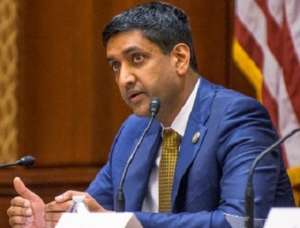
Lawmaker confident IDEA Act will pass before end of lame-duck Congress
Amid the Trump administration's plans to transform the way the government approaches customer service, agencies and lawmakers are laying the groundwork to get...

Amid the Trump administration’s plans to transform the way the government approaches customer service, agencies and lawmakers are laying the groundwork to get that strategy off the ground.
Rep. Ro Khanna (D-Calif) said Tuesday that he’s hopeful Congress would pass his bill, the 21st-Century Integrated Digital Experience (IDEA) Act, before the end of the lame-duck session.
The IT modernization and customer service bill would push agencies to make more services available online and set minimum standards for federal websites — such as making them making more mobile-friendly and data secure.
“We need to make sure that every agency is offering a digital option for people to do every possible transaction,” Khanna said. “There’s no reason that agencies should be, in this day and age, relying on fax machines or in-person [visits], unless you’re dealing, of course, in some parts of our country which are still rural.”
The bill, already approved by the House Oversight Reform Committee and the Homeland Security and Governmental Affairs Committee, would also require agencies to allow for greater use of e-signatures.
“This is an example of both Democrats and Republicans working together to get something done,” Khanna said.
The Silicon Valley lawmaker acknowledged federal employees’ concerns with the Paperwork Reduction Act amid the Trump administration’s customer service transformation. The law restricts the types of information agencies can collect, and the number of people they’re able to solicit at any given time.
“I think it’s important to be hearing directly people who are using these sites, and if there are barriers to doing that, then I’m happy to work with others to remove those barriers,” Khanna said.
Agencies could also find considerable cost savings in pushing more of their customer transactions online. Khanna estimated that agencies spend about $40 per face-to-face or over-the-phone transaction with customers, but only spend about 22 cents on those same interactions online.
The IDEA Act would give agency chief technology officers and chief information officers the authority to oversee modernization progress. Many of the bill’s objectives, he said, just codify existing guidance from the Office of Management and Budget.
“Most people in these agencies want to modernize these websites and offer these tools. They don’t need to be penalized into doing it. They just need to understand what the clear goals are and have the authority to prioritize those goals,” Khanna said.
In June, OMB updated its Circular A-11 to outline nine common metrics that agencies should follow under the administration’s customer service transformation:
- Satisfaction
- Confidence/trust
- Service
- Quality
- Process
- Ease/simplicity
- Efficiency/speed
- Equity/transparency
- Employee helpfulness
“We really wanted to provide flexibility for agencies, understanding their own context and reality of the service they were providing, to kind of make it work for them,” said Amira Boland, a detail OMB’s customer experience team. “The VA is providing health care, the National Park Service is providing an experience, the IRS is asking you to comply with something. Those are very different customer experiences, but we tried to boil it up to: What are things that are consistent at the transaction level?”
Copyright © 2025 Federal News Network. All rights reserved. This website is not intended for users located within the European Economic Area.
Jory Heckman is a reporter at Federal News Network covering U.S. Postal Service, IRS, big data and technology issues.
Follow @jheckmanWFED





